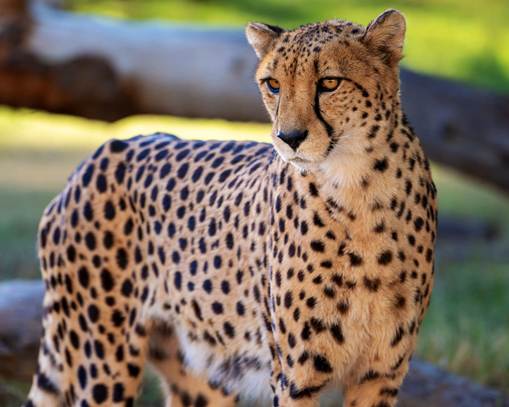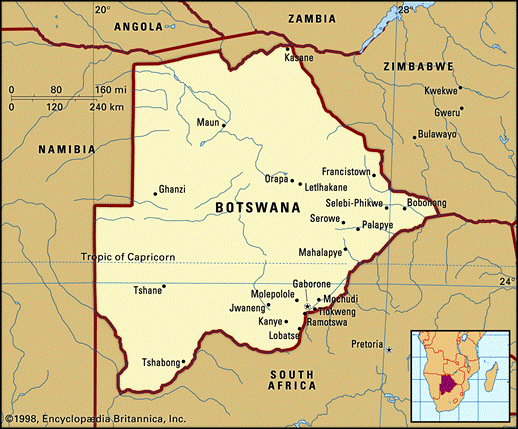Published on Nov 14, 2025
Daily PIB Summaries
PIB Summaries 14 November 2025

Content
- BOTSWANA GIFTS INDIA EIGHT CHEETAHS FOR NEXT PHASE OF PROJECT CHEETAH
- AKSHAR MAHOSTAV
BOTSWANA GIFTS INDIA EIGHT CHEETAHS FOR NEXT PHASE OF PROJECT CHEETAH
Why in News?
- Botswana has formally gifted 8 wild cheetahs to India for the next phase of Project Cheetah.
- President of India Droupadi Murmu and Botswana President Duma Gideon Boko jointly witnessed their symbolic release at Mokolodi Nature Reserve, Botswana.
- Marks a new chapter in India–Botswana wildlife cooperation, especially after earlier cheetah translocations from Namibia and South Africa.
Relevance
GS 3 – Environment, Biodiversity & Conservation
- Inter-continental translocation under Project Cheetah.
- Genetic diversification for long-term species viability.
- Wildlife reintroduction science, habitat restoration, landscape ecology.
- India–Africa cooperation in wildlife management and anti-poaching systems.
GS 2 – International Relations
- Strengthening India–Botswana ties across wildlife, energy, agriculture, health, digital cooperation.
- Conservation diplomacy as an instrument of foreign policy.
- Alignment with India’s Africa strategy (IAFS, Global South outreach).
- Multilateral collaboration: UN, G77, NAM.

The Event
- 8 cheetahs captured from Botswana’s Ghanzi region were released into the quarantine facility at Mokolodi.
- Joint operation by Indian & Botswanan wildlife experts.
- Symbolic launch of the next phase of India’s cheetah reintroduction programme.
Importance for Project Cheetah
- Expands the genetic base of India’s cheetah population.
- Addresses high mortality concerns by strengthening founder population diversity.
- Reinforces long–term viability of Kuno and other potential sites (Gandhi Sagar, Nauradehi, Mukundra).

India–Botswana Wildlife Diplomacy
- Botswanan cheetahs are considered more wild, genetically strong, and habituated to large landscapes.
- Enhances India’s conservation diplomacy in Africa.
- Botswana emerges as a key partner along with Namibia and South Africa.
High-Level Bilateral Engagements
Core Themes Discussed
- Strengthening of bilateral ties.
- Expansion of cooperation in:
- Renewable energy
- Agriculture
- Digital technologies
- Trade & investments
- Health & education
- Wildlife management & ecological research
India–Botswana Relations (Strategic Context)
- Built on shared democratic values and South–South cooperation.
- India is a major development partner under:
- ITEC
- Pan-African e-Network
- Solar Alliance collaboration
- Indian diaspora (~11,000) plays a strong economic role in retail, mining, IT, and healthcare.
President’s Address to Indian Community
Key Points
- Appreciated diaspora’s contribution as cultural ambassadors.
- Urged them to:
- Support Botswana’s national development.
- Deepen people-to-people ties with India.
- Leverage OCI scheme, Pravasi Bharatiya Diwas, and India’s economic transformation.
- Emphasised India–Botswana partnership driven by trust, respect, democratic values.
Diplomatic Significance of the Visit
- Forms part of her two-nation African tour: Angola + Botswana.
- Aligns with India’s larger Africa outreach:
- India–Africa Forum Summit (IAFS) strategy
- Strengthening ties with resource-rich African democracies
- Collaboration in multilateral forums (UN, G77, NAM)
Relevant Angles
Environment & Biodiversity
- Project Cheetah: world’s first inter-continental large carnivore translocation.
- Genetic diversification is crucial for rewilding success.
- Botswanan cheetahs boost ecological viability in Indian landscapes.
International Relations
- Deepening India–Africa partnerships.
- Expanding conservation diplomacy.
- Forward movement in trade, digital public infrastructure, and renewable energy.
Diaspora
- Diaspora as soft power multiplier.
- Role of OCI initiatives and cultural diplomacy.
Future Outlook
- Next batch of cheetahs expected in India’s newly prepared reserves.
- Enhanced India–Botswana joint training & conservation protocols.
- Greater collaboration in:
- AI-based wildlife tracking
- Anti-poaching intelligence
- Community-based conservation models
AKSHAR MAHOTSAV
Why in News?
- The National Museum, under the Ministry of Culture, is hosting Akshar Mahotsav 2025 from 14–16 November 2025.
- Theme: “Akshar–Sanskriti – Letters as Pillars of Culture.”
- Celebrates India’s scriptural, calligraphic, and manuscript heritage in partnership with The Calligraphy Foundation.
Relevance
GS 1 – Art & Culture
- Preservation of scriptural, calligraphic, and manuscript heritage.
- Cultural significance of Indic scripts (Brahmi, Sharada, Grantha, Siddham).
- Museums as custodians of intangible cultural heritage.
- Revival of traditional arts through contemporary platforms.
GS 1 – Indian Heritage & Literature
- Manuscripts as carriers of civilizational memory.
- Script evolution and linguistic heritage.
- Integration of classical knowledge with modern creative expression.
The Event – Core Details
- Venue: National Museum, New Delhi.
- Duration: 3 days (14–16 November 2025).
- Organised by:
- National Museum
- The Calligraphy Foundation
- Supported by Ministry of Culture
- Motto: “Lekhan Se Sulekhan” (From Writing to Calligraphy).
Cultural & Educational Significance
- Reasserts that scripts are fundamental to India’s civilizational identity.
- Links manuscript heritage with modern creative arts.
- Promotes interdisciplinary learning: art, history, linguistics, design.
Alignment with Government Programmes
National Mission for Manuscripts
- Supports documentation, conservation, digitalisation of India’s manuscript wealth.
Ek Bharat Shreshtha Bharat
- Highlights script diversity across states.
- Promotes inter-cultural appreciation through written traditions.
National Education Policy (NEP 2020)
- Encourages inclusion of art-integrated learning, Indian knowledge systems, and multilingual education.
- Fuses creative literacy with contemporary pedagogy.
Ministry of Culture’s Vision: Preservation with Innovation
- Revitalising traditional Indian scripts while promoting digital calligraphy.
- Encouraging young artists and designers to reinterpret Indic scripts.
- Using exhibitions, workshops, and master sessions to merge heritage with modernity.
Larger National Impact
- Strengthens India’s positioning as a leader in creative literacy and script innovation.
- Revives awareness of classical scripts (Brahmi, Sharada, Grantha, Siddham).
- Boosts national and global appreciation for:
- Handwritten arts
- Manuscript traditions
- Scriptural diversity
- Visual communication heritage
Relevant Angles
Art & Culture
- Revival of handwritten and manuscript traditions.
- Importance of scripts as carriers of cultural memory.
- Role of institutions in preserving intangible heritage.
Culture Policy
- Implementation of NEP 2020 and cultural education integration.
- Collaboration between government museums and private cultural foundations.
Heritage Conservation
- Connection with digital preservation programmes.
- Promotion of knowledge systems rooted in classical Indian traditions.
Creative Economy
- Expanding India’s cultural industries: calligraphy, design, arts education.
- Nurturing young creators through workshops and exhibitions.
Future Outlook
- Possible expansion into a national calligraphy circuit across museums.
- Digital archives of artworks and manuscripts.
- Integration of calligraphy modules in schools and colleges.
- Greater public engagement in aesthetic, linguistic, and heritage literacy.
